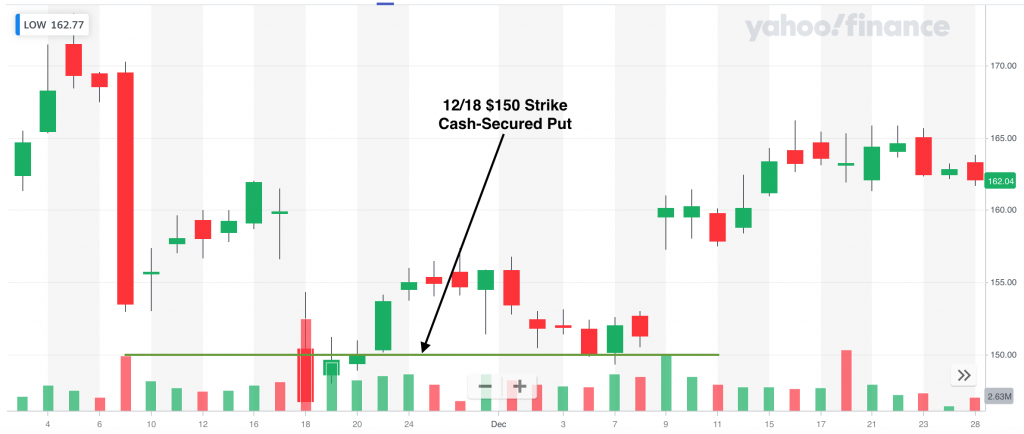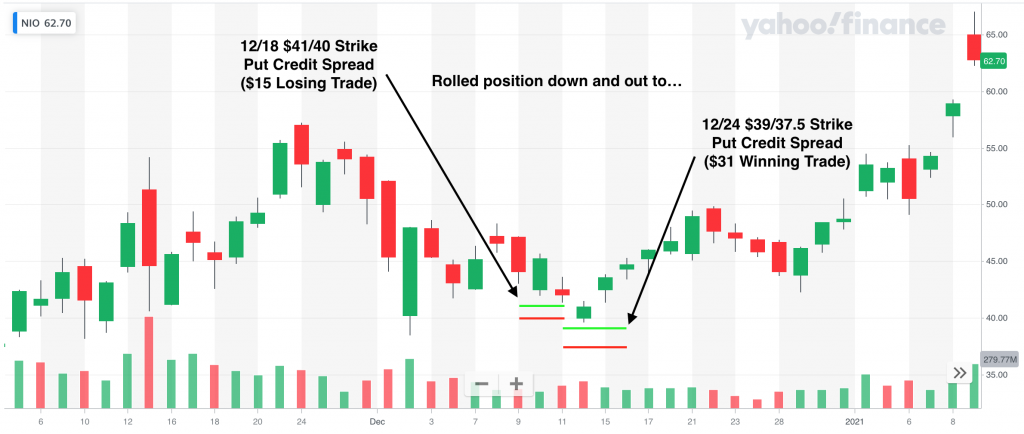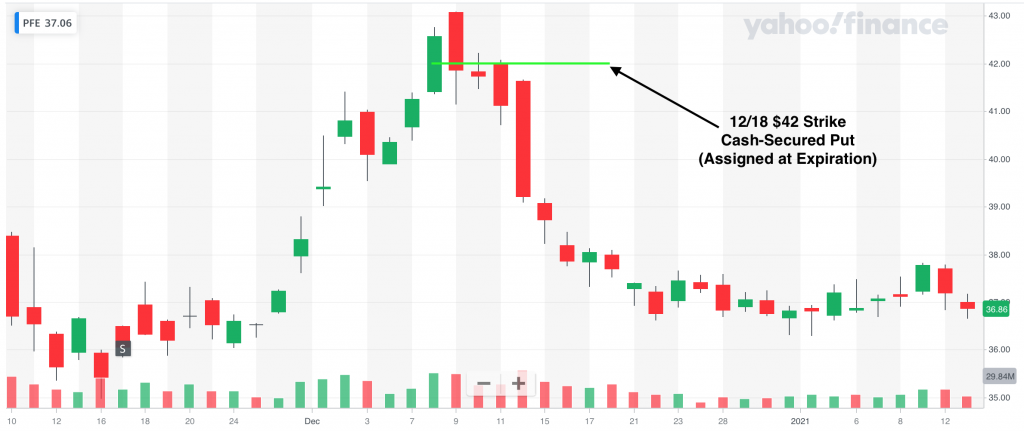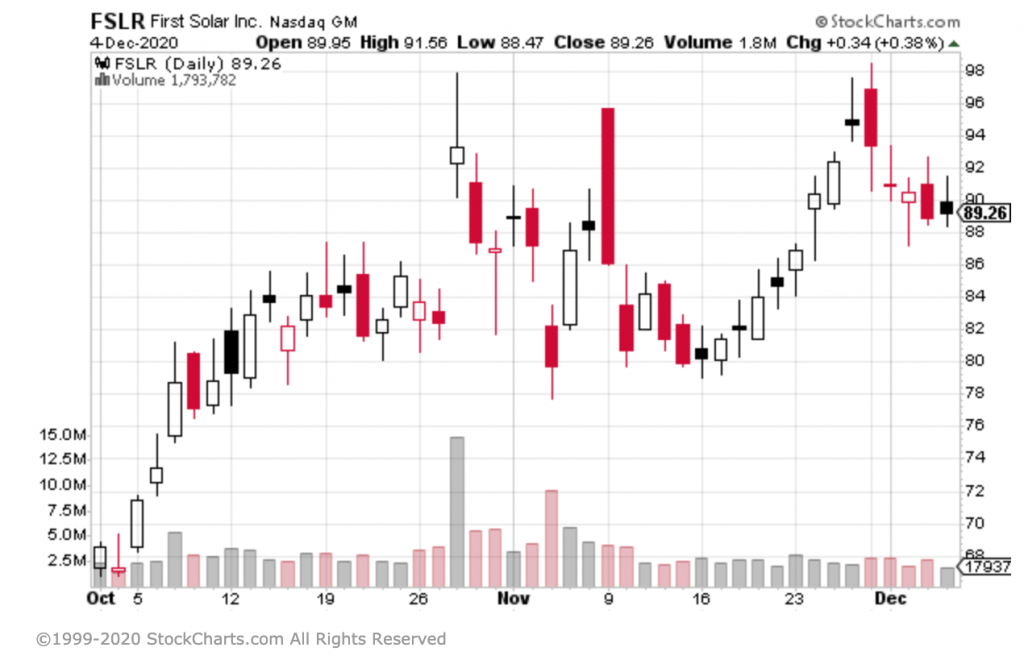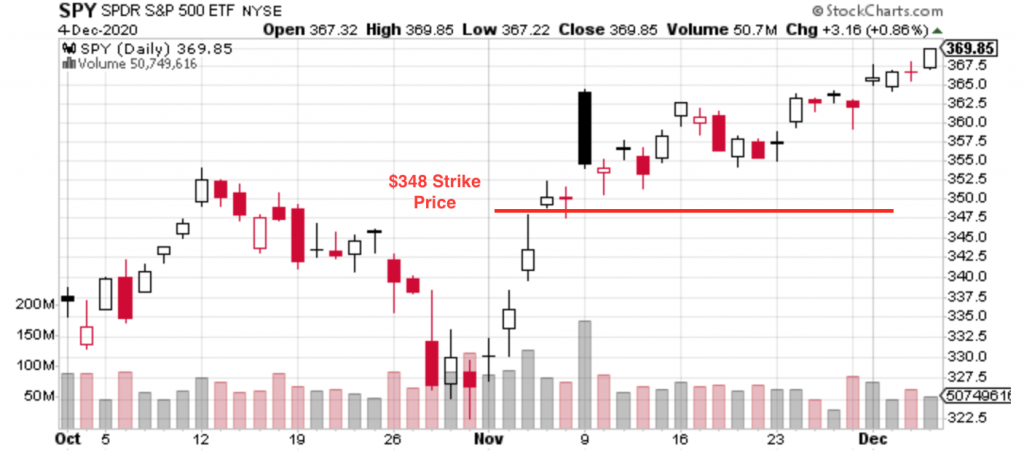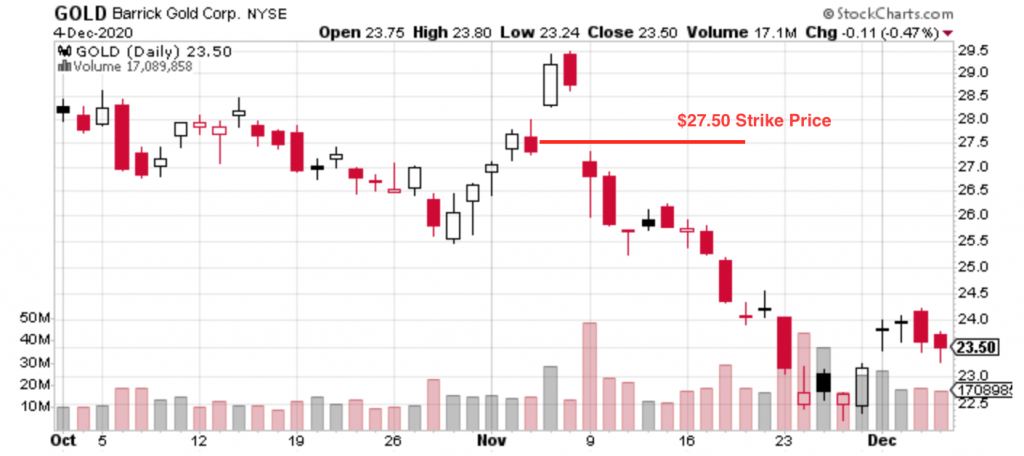The market in January had a strong start before Game Stop mania threw a wrench into things. I actually participated in the craziness in a very small way. I sold a call credit spread that was WAY in the money for a few days (like… $300 in the money!) Since it was a defined risk trade I had no problem waiting it out. In the end I was probably the only person on that $GME trade that ended up with a $10 profit. I think most were were up or down 100x, 1000x or more than that. As the dust began to settle, $SPY retreated a bit and closed the month down 1.0%.
My total profits from trading were $2,623.63, another best ever month by 13%! That was a 1.5% total portfolio return from options trading. Not bad for a month where the markets were in the red. My total portfolio value across all accounts – which includes options trading profits, current stock & options positions, contributions & withdrawals for extra mortgage principal payments – was up 0.6%. I did contribute $6,000 into my ROTH IRA in January, but that isn’t included in the returns for the month. In January I closed 71 trades with a win rate of 96%*.
(* That win rate is a bit misleading because it doesn’t count positions that were assigned as losses. The only way I get a loss according to my tracking is if I close a position with a negative net credit. I took assignment on 3 trades. If those 3 are counted as losses, my win rate comes down to 92%.)
I continue to split my accounts between two strategies. One is to trade mostly credit spreads and naked puts in margin accounts and the other is to sell cash-secured puts & covered calls (i.e. “the wheel” strategy) in non-margin and IRA accounts. As I wrote in my January update of my mortgage pay off, I am starting to do some “poor man’s covered calls” as well. The goal for the margin accounts continues to be to 1) raise cash to increase trading capital and 2) run through my mortgage pay off strategy. The other accounts are reinvesting the profits into stock positions for future growth or passive income via dividend stocks.
Biggest Winner
My favorite part about writing these monthly reviews is looking back at what was my biggest winner and loser. Since I am doing so many trades in a month, each trade is closed and put behind me quickly. It’s only because I keep detailed records of each trade that I can look back and learn what’s working and what isn’t.
My biggest winner for January came from a poor man’s covered call on $AAPL. On January 26th I opened a $100 strike June 2022 Call LEAP contract for $49.50 ($4,950 total). I’m bullish on Apple going higher. This contract gives me almost 18 months to be right and gives me a break-even of $149.50. I then sold a covered call at $152.5 strike for the January 29 expiration for $1.85 per contract ($185 total). Due to the frenzy around earnings (which Apple killed by the way with quarterly revenues topping $100 billion!) the premiums were pretty rich even for such a short dated contract. I closed it two days later (one day before expiration) for a net credit of $178.34. This was all in an IRA, so it’s all mine to keep!
I will continue to sell covered calls at $150 or above to generate income from that LEAP contract and hope I don’t get assigned. If I do, however, I know I will make a profit because my break-even is at $149.50. I may occasionally sell credit spreads if I think there is a chance the stock price could blow past my covered call. Selling a spread is more likely to allow me to roll the position up when I move it out because of the long call as extra “protection” allows me to widen my spread.
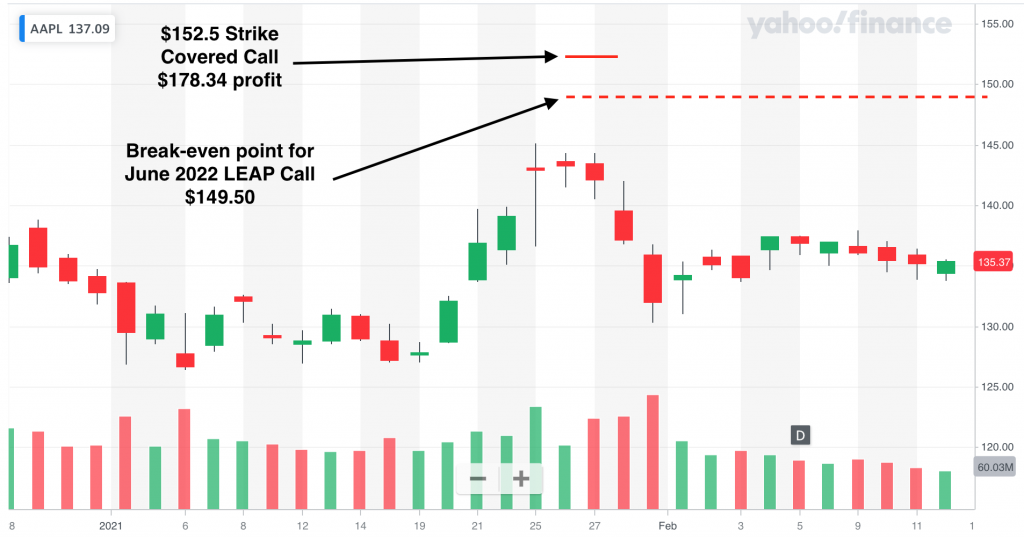
You can see my LEAP is in the red at this point. With 16 months remaining in the contract, however, I’m still feeling pretty good about it.
Biggest Loser
I’m going to consider a cash-secured put that I was assigned at expiration on as my biggest loser for January. It was a January 29 short Put on $SBUX at the $99 strike that I sold on January 7th. I collected a $1.25 credit ($124.34 net commissions), but was assigned while the shares were trading at $96.79. Therefore, at assignment, I was down a net $96.66 ($1.2434 – $99 + $96.79). Looking at the chart below you can see I had a comfortable margin of safety until it really dragged down just before expiration.
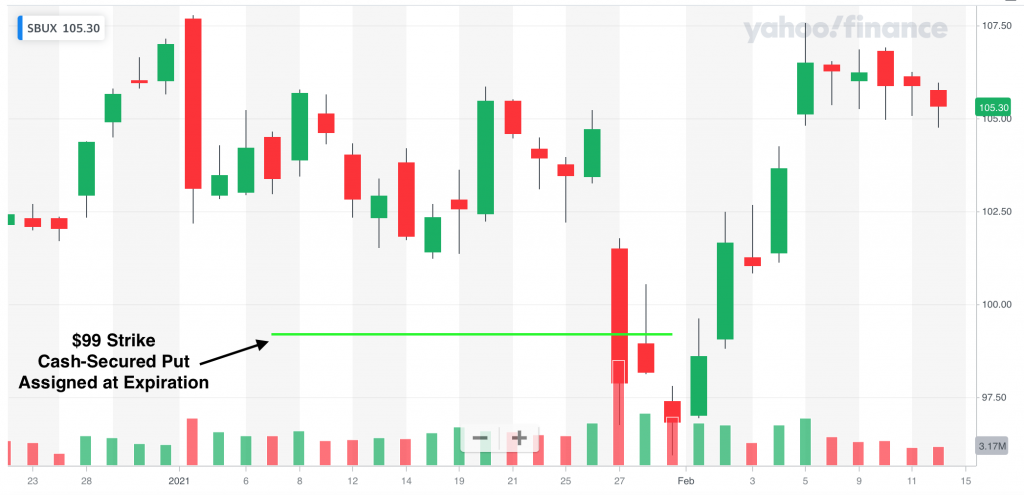
Fortunately, I happen to think Starbucks is a fantastic business and was not worried at all by the assignment. I immediately sold a covered call that, as you might expect from looking at the rebound at the beginning of February, is now in the money and looking like I will get assigned in the other direction now! This one was also in an IRA so no tax-man to collect on all these trades.
2021 Goals
Another great thing about writing these blogs is that they hold me accountable. In my December review I posted some goals for the year. Here’s a look at how they are going so far:
- Contribute $6,000 to my ROTH IRA. CHECK! I already funded my ROTH IRA in the first few days of the new year. Now the trick is to put those dollars to work!
- Build $100/month in passive income, primarily from dividends. I want to finish 2021 with a forward looking $100/month in 2022. I am now tracking my dividends separately from my options trading. I collected $55.97 in January. The biggest contributor to that was a quarterly dividend from $SPY.
- $10,000 in non-W2 income. It will take $833 per month on average to hit this. Adding the $55.97 from dividends and $751.86 from my taxable accounts puts me at $807.83. Very happy to be at 97% of the monthly goal in January!
- Increase our 401k contributions. I have increased my contributions to hit the maximum $19,500 by the end of the year. My wife’s contribution has remained the same so far. We’ll see if we are able to maintain that throughout the whole year, but we are off to a great start.
- Increase net worth by 30%. A 30% net worth increase for the year will take a 2.21% compounded monthly return. For the month of January our net worth was up 2.51%. So we’re on track! As I wrote in my post where I set this goal, an increased savings rate, at this point in our accumulation phase of growing our wealth, has a dramatic impact on our net worth. As we grow our net worth we will be more subject to market conditions (assuming we have a decent amount of our wealth in the stock market, for example).
- Reduce mortgage length by 1 month. Not there yet, but we are chipping away at it with another $35 extra principal made from my mortgage pay off strategy. We currently would need to make another $610 in principal payments to reach that goal.
That’s a wrap on January. We are off to a slightly slower start than January so we’ll see if I can close the gap for another record breaking month. If not, no sweat. I’m trying to stay on a consistent path of progress and not looking for home runs.
Disclaimer: I am long $AAPL, $SBUX and $SPY. I am not a financial advisor. This is not investment advice. Please do your own research before investing in anything discussed herein.
